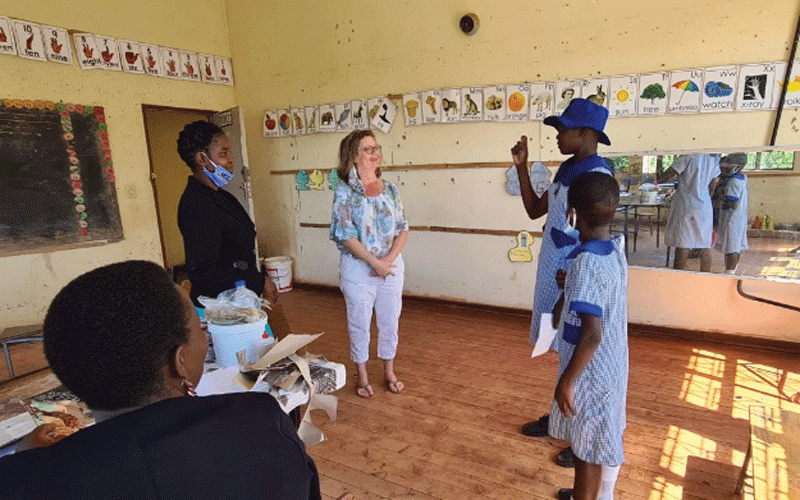
The existential threat of climate change manifests most brutally in regions dependent on rainfed agriculture, and nowhere is this more evident than in Zimbabwe's semi-arid zones.
The shifting climate marked by increasing aridity, erratic rainfall, and devastating Intra-Seasonal Dry Spells (ISDS)—has pushed smallholder farmers to the brink.
The proposition that rainwater harvesting and agroecological irrigation make farmers more resilient is not just an optimistic slogan; it is the blueprint for survival, sustainability, and ultimately, food sovereignty. In this analysis, I argue that the systematic, integrated adoption of both robust water management and holistic soil stewardship offers the only viable and transformative path for Zimbabwean farmers to decouple their livelihoods from unpredictable weather, turning climate vulnerability into enduring resilience.
Zimbabwe’s agricultural sector, which supports over 80% of the rural population, is fundamentally a rain-fed system.
The country’s natural regions IV and V, which receive low and unreliable precipitation, are ground zero for climate-induced poverty and food insecurity.
Traditional practices that worked for centuries are breaking down under the strain of prolonged droughts and sudden, violent downpours that lead to massive runoff and soil erosion.
Therefore, the strategic intervention is not merely to find more water, but to radically improve how every single drop of rain is captured, conserved, and productively utilised.
For Zimbabwean farmers, effective rainwater harvesting (RWH) revolves around proven, low-cost, and easily implementable on-farm techniques. These techniques can be categorized into two areas: in-situ (field-level) and storage (ex-field).
- Mavhunga puts DeMbare into Chibuku quarterfinals
- Bulls to charge into Zimbabwe gold stocks
- Ndiraya concerned as goals dry up
- Letters: How solar power is transforming African farms
Keep Reading
In-situ methods are the first line of defence, focused on retaining moisture where it falls.
Farmers can significantly increase infiltration and reduce destructive runoff by implementing:
Tied ridges (TR) and pot holing (PH): These are field-based micro-catchment systems.
Tied ridges are small earthen barriers constructed across the furrows of crops, creating basins that trap water and prevent it from running off the slope.
Pot holing, or using modified planting pits locally known as zai pits or tumbuzika, involves digging small depressions that are often enriched with manure or compost.
These pits act as localised reservoirs, concentrating rainfall and nutrients directly at the plant's root zone, dramatically improving soil moisture retention and boosting yields, especially during dry spells.
Deep contours and trenches (zvimbuyambuya): Dug along slopes, these act as long trenches that slow surface runoff, allowing water more time to soak into the surrounding soil profile and recharging the shallow water table.
Mulching: Covering the soil with crop residue or organic matter is a simple yet revolutionary RWH component.
Mulch acts as a physical barrier, significantly reducing non-productive water loss through soil evaporation, stabilising soil temperature, and simultaneously feeding the soil microbial ecosystem.
Ex-field methods focus on capturing and storing larger volumes for later supplemental irrigation.
This includes constructing small dams or weirs along gullies or ephemeral streams to capture runoff before it leaves the farm, or building sand dams which store water in the sand matrix, minimising evaporation.
At the household level, rooftop rainwater harvesting into plastic or underground tanks provides clean water for non-drinking domestic use or, critically, for supplemental drip irrigation in high-value vegetable gardens.
This stored water is vital for mitigating ISDS, which are short, unexpected dry periods that often coincide with the crops' most vulnerable flowering stage.
Rainwater harvesting alone is powerful, but its full potential is unlocked only when integrated with comprehensive agroecological principles.
Agroecology, as a holistic approach, views the farm as an ecosystem, emphasizing biodiversity, recycling, and natural processes.
The most critical synergy comes through conservation agriculture (CA), which is defined by three pillars: minimal soil disturbance (zero tillage), permanent soil cover (mulching/cover cropping), and crop diversification (rotation and intercropping).
When a farmer combines tied ridges with zero tillage and mulching, the result is exponential: the ridge traps the water, the lack of tillage preserves the soil structure and its water-holding capacity, and the mulch locks the moisture in.
Furthermore, the adoption of agroforestry—integrating trees like the nitrogen-fixing Faidherbia albida alongside field crops provides shade (reducing evaporation) and enriches the soil, while the deep roots of the trees help stabilise the water table.
By diversifying away from monocultures of vulnerable maize to hardy, nutritious, and drought-resistant crops like orange maize, cowpeas, and millets, farmers buffer their food security against potential crop failure.
This layered approach ensures that the farming system is not just surviving, but thriving in the face of uncertainty.
The integration of RWH and agroecology directly addresses and helps “beat” climate change in two essential ways: adaptation and mitigation.
Climate adaptation (resilience): The RWH-Agroecology system is fundamentally about building climate-proof farms.
By mitigating ISDS, farmers gain control over the most frequent cause of crop failure, guaranteeing a stable harvest even with below-average rainfall.
This stability enhances water use efficiency (WUE) the ratio of crop yield to water applied ensuring every unit of rainfall translates into maximum productivity.
This economic and yield stability is key to resilience; it allows farmers to invest in soil fertility (e.g., composting) rather than scrambling for emergency aid, thereby locking in long term food security and breaking the cycle of climate-induced vulnerability.
Climate change mitigation: Critically, this strategy moves beyond mere adaptation into global mitigation. Healthy agricultural soils are one of the world's largest potential carbon sinks.
By practicing zero tillage, maintaining permanent soil cover, and utilising agroforestry, farmers actively sequester atmospheric carbon dioxide into the soil (soil carbon sequestration).
This makes the Zimbabwean smallholder not just a victim of climate change, but an active, decentralised solution provider, contributing to global efforts to reduce greenhouse gas concentrations.
The reliance on rain fed agriculture in Zimbabwe has reached its limit.
To confront the era of climate disruption, a revolutionary but practical commitment to rainwater harvesting and agroecology is required.
The fusion of simple, low cost RWH techniques (tied ridges, pits, mulching) with CA principles creates farming systems that are resilient to drought, resistant to erosion, and demonstrably more productive.
Policy and development agencies must recognise these local, farmer led innovations as foundational infrastructure.
By scaling up the knowledge and resources necessary for farmers to become water and soil stewards, Zimbabwe can transform its highly vulnerable agricultural sector into a globally relevant model of sustainable, climate-resilient food production.











